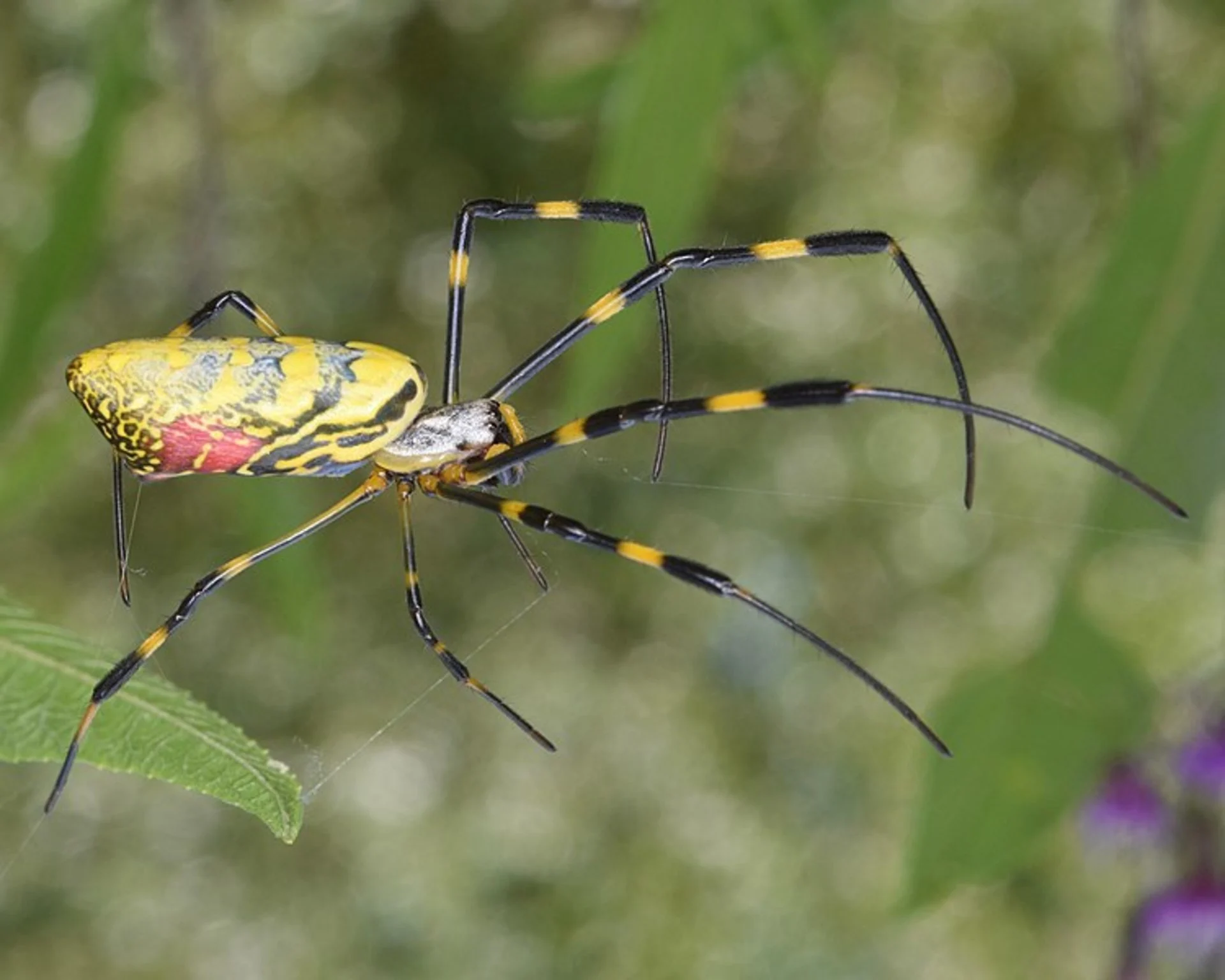
Giant venomous spider webs drape parts of the U.S.: Will they spread to Canada?
An expert weighs in on the future of the joro spider in Canada.
"Imagine a grape in the palm of your hand. That's about the size of their abdomen," Andrew Davis, a research scientist in the ecology department at the University of Georgia, says.
He's talking about the joro spider, an invasive species that seems everywhere in Georgia this time of year.
Draping neighbourhoods with webs as thick as 3 metres, clinging to porches, branches, and vegetable patches, parts of the southern U.S. are currently covered with sticky webs.
If the winds get strong enough, the spiders can use their webs as 'parachutes,' transporting them as far as 160 km.
The giant spiders - noted for their long legs and bright yellow abdomens - are about 7 cm long, are originally from East Asia, and were first spotted in North America in 2014.
They likely hitchhiked their way into North America via a shipping container. Entomologists say residents should get used to them because they "aren't going anywhere."
2021 was a notable year for the spiders in the U.S., thanks to favourable conditions that allowed for a population boom.
Joro spiders have been spotted in Georgia, Alabama, North Carolina, South Carolina, and Tennessee, and their presence is spreading.
Could joro spiders make their way into Canada?
Because they're excellent hitchhikers, Davis says it's likely joros will pass into Canada.
However, the key to establishing a population is having eggs that survive the winter.
Davis says it's unlikely joro eggs will be able to withstand winter in most parts of Canada, except in southern Ontario.
Still, he's doubtful they will "set up shop" in our neck of the woods.
'Not so bad'
But unlike other invasive species, which can outcompete native wildlife and damage the environment, Rick Hoebeke of the Georgia Museum of Natural History, who first identified the Joro spider in Georgia, says this species isn't so bad. For starters, UGA specialists haven't seen any detrimental effects on native species due to the presence of Joros, aside from their nuisance to humans.
The spiders—which are striking due to their bright colours—act as natural pest control for mosquitoes and other biting insects, reducing the need for chemical pesticides. While joros can bite people, they are unlikely to do so because they are not aggressive, and while venomous, their venom is considered weak and not "medically important".
For that reason, experts classify them as not harmful to humans.
And here's one good thing about their size: They're typically big enough that they won't sneak up on you, making them easier to avoid.
They're also antisocial: Davis says he's never heard of a joro entering someone's home.
Most joros die off by late November, leaving egg sacs that hatch in the spring.
Header image: File photo/Christina Butler/Wikipedia CC BY 2.0










